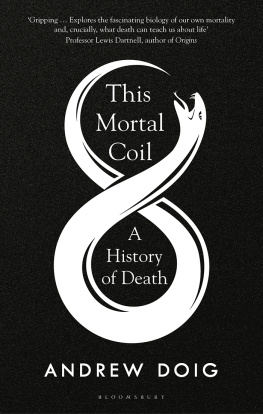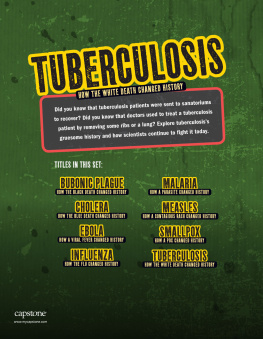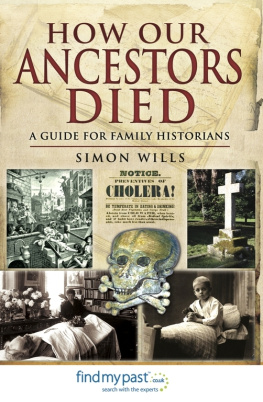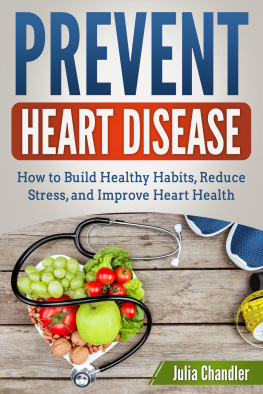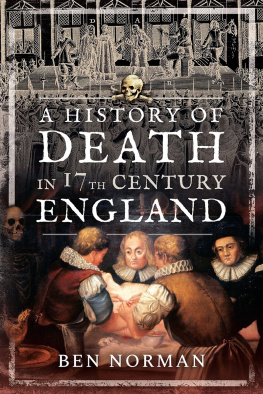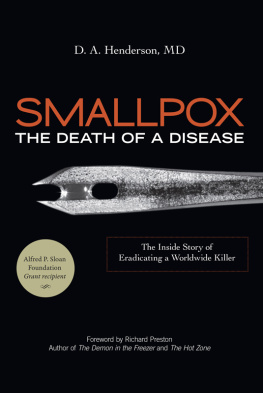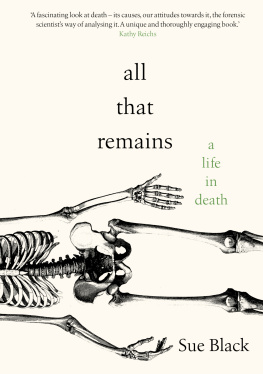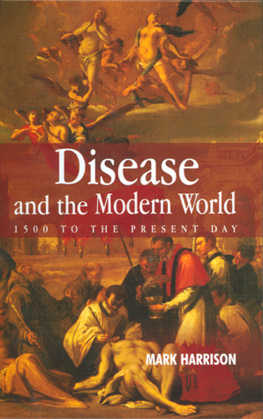THIS MORTAL COIL

BLOOMSBURY PUBLISHING
Bloomsbury Publishing Plc
50 Bedford Square, London, WC1B 3DP, UK
29 Earlsfort Terrace, Dublin 2, Ireland
BLOOMSBURY, BLOOMSBURY PUBLISHING and the Diana logo are trademarks of Bloomsbury Publishing Plc
First published in Great Britain 2022
This electronic edition first published in 2021
Copyright Andrew Doig, 2022
Andrew Doig has asserted his right under the Copyright, Designs and Patents Act, 1988, to be identified as Author of this work
All rights reserved. No part of this publication may be reproduced or transmitted in any form or by any means, electronic or mechanical, including photocopying, recording, or any information storage or retrieval system, without prior permission in writing from the publishers
Bloomsbury Publishing Plc does not have any control over, or responsibility for, any third-party websites referred to in this book. All internet addresses given in this book were correct at the time of going to press. The author and publisher regret any inconvenience caused if addresses have changed or sites have ceased to exist, but can accept no responsibility for any such changes
A catalogue record for this book is available from the British Library
ISBN: HB: 978-1-5266-2441-3; TPB: 978-1-5266-2442-0;
EBOOK: 978-1-5266-2440-6; EPDF: 978-1-5266-4641-5
To find out more about our authors and books visit www.bloomsbury.com and sign up for our newsletters
To Penny, Lucy and Sarah
For in that sleep of death what dreams may come,
when we have shuffled off this mortal coil,
must give us pause.
William Shakespeare, Hamlet , 1599/1601
Contents
And so many died that all believed that it was the end of the world.
Agnolo di Tura del Grasso, The Plague
in Siena: An Italian Chronicle , 1348
Six hundred years after the Franks, Goths, Saxons and other invaders brought down the Western Roman Empire, their lands had developed into nations that we still recognise today: France, England, Spain and Germany. Here, from 1000 to 1300, the climate grew warmer, forests were cleared and cultivated, towns were founded and farming methods improved. New inventions of paper, the compass, windmills, gunpowder and reading glasses, with better ships and mechanical clocks, drove economic growth and trade. Greater wealth funded new universities, magnificent Gothic cathedrals, literature and music. Famine was still present, but the structure of medieval society, with its threefold division into those who pray, those who fight and those who work, remained strong. All this was to be stretched to breaking point by the catastrophic Black Death, which struck Europe in the 1340s.
In 1347, Siena was one of the richest and most beautiful cities in Central Italy, with its prosperity based on moneylending, the wool trade and military strength. Visitors would have seen the impressive seat of government, the Palazzo Pubblico, and a spectacular cathedral undergoing construction work that was intended to more than double its size. By the thirteenth century Siena was able to match Florence, its great rival thirty miles to the north, and was steadily expanding the size of its republic.
Shoemaker and tax collector Agnolo di Tura del Grasso produced a chronicle of events in Siena from 1300 to 1351, based on his own observations, consultation of public records and personal experience. He provides one of the best contemporary accounts that we have for the deadliest disease that has ever afflicted humanity plague.
Plague entered Tuscany through the port of Pisa in January 1348. It took two months to travel upstream to Florence, then made its way south to Siena. Di Tura tells us that: The mortality began in Siena in May [1348]. It was a cruel and horrible thing the victims died almost immediately. They would swell beneath their armpits and in their groins, and fall over dead while talking. Father abandoned child, wife husband, one brother another.
The enormous death rate made normal Christian funerals impossible. No one could be found to bury the dead. Families had to leave their corpses in ditches or take them to great pits, where they were often buried without a priest to officiate. Poor Di Tura lost all his children: And I buried my five children with my own hands. And there were also those who were so sparsely covered with earth that the dogs dragged them forth and devoured many bodies throughout the city. There was no one who wept for any death, for all awaited death And no medicine or any other defence availed.
Di Tura estimated that three-quarters of the population of the city and suburbs of Siena died about 80,000 people in just five months. Society collapsed:
And those that survived were like persons distraught and almost without feeling. And many walls and other things were abandoned, and all the mines of silver and gold and copper that existed in Sienese territory were abandoned as is seen; for in the countryside many more people died, many lands and villages were abandoned, and no one remained there. I will not write of the cruelty that there was in the countryside, of the wolves and wild beasts that ate the poorly buried corpses. The city of Siena seemed almost uninhabited, for almost no one was found in the city. And then, when the pestilence abated, all who survived gave themselves over to pleasures: monks, priests, nuns, and lay men and women all enjoyed themselves, and none worried about spending and gambling. And everyone thought himself rich because he had escaped and regained the world.
The story of plague in Siena and the testimony of Agnolo di Tura graphically show the devastation that plague could cause. While the Black Death is an extreme example, sudden death at the hands of various infectious diseases was common for thousands of years, certainly from when we started farming and living in cities. Thankfully, it is now rare. Even though we rightly worry about infections like influenza, pneumonia or Covid-19, their power does not come close to that of cholera, smallpox or plague. Yet the details of the events in Siena reveal two other leading causes of death that we have also largely overcome, namely famine and war.
The harvest failed in Tuscany in 1346 and hailstorms destroyed crops the year after. Hungry, malnourished people moved from the countryside to the city, in search of food, work and charity. Their living conditions would magnify the effects of the Black Death, as the disease was swiftly transmitted in overcrowded and dirty neighbourhoods. Famine kills mainly by promoting infectious disease and magnifying its dangers, so the plague struck Siena at its most vulnerable, following two years of famine.
The city states of Italy, and their powerful neighbours, like France, Spain and the Ottoman Empire, were routinely engaged in conflict with each other. Wars were endemic throughout Italy and the rest of Europe. Rather than using their own citizens as soldiers, Italian wars were typically fought by mercenaries who engaged in sieges, fed themselves by looting, and deliberately destroyed crops, livestock and buildings in enemy territory, reducing peasants to destitution and famine. Armies made use of plague, waiting for the disease to ravage a city before sending in an occupying force.
Siena had been largely successful in warfare for hundreds of years, right up to the fateful 1340s, expanding their state to the coast. All this came to a sudden halt with the plague. Industry, construction, agriculture and government simply stopped. When politics did resume, the city council was reduced in size by one-third, as so many of the city elite had died. Tuscany was full of abandoned buildings, ghost towns, overgrown fields and returning forest. The oligarchy that had ruled Siena for sixty-eight years was overthrown in 1355, leading to a century of unstable governments and revolutions. Unpaid mercenary companies took control of the countryside, terrorising and looting. Taking advantage of the new situation, rival states began to eat into Sienese territory. The end finally came in 1555, when the republic surrendered to King Philip of Spain, who promptly handed Siena over to their bitter rivals, Florence. It was not until the twentieth century that Sienas population returned to pre-plague levels, which is one reason why it has preserved its beautiful medieval city centre. The cathedral remains unfinished.
Next page
